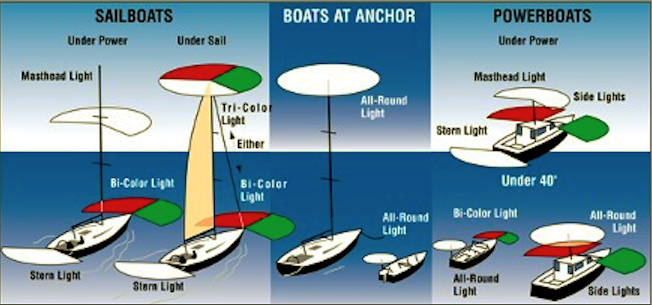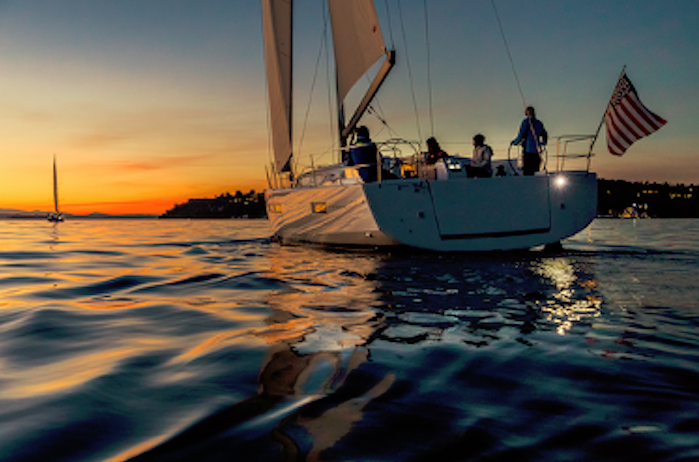Safety at Sea: Close Call with a Freighter—Never Assume Anything

Close Call with a Freighter—Never Assume Anything
Boating at night with stars glimmering over the sounds of the sea allows us to connect to the beauty and privilege of cruising. Craig Briggs was enjoying one such evening in the Mediterranean Sea, until he was nearly run over. Here’s his story:
On a moonless overnight passage from Sardinia south bound to Tunisia, we were alerted to an approaching freighter by a bright red light off to port and a substantial radar return. She was likely heading north up to Rome on a wide port-to-port crossing.
No problem, we thought. It was about 8 miles off on radar (we did not have AIS at that time) and my wife Katherine and I were having a super power reach southbound in a brisk westerly at about 7.5 knots on our Amel 46 Santorin Ketch, Sangaris.

Weirdly though, only a few minutes later the radar showed the freighter to be closing on us but still definitely showing its red light. How could that be? So, we logically held course for what we assumed to be a safe but closer port-to-port passing, thinking he must be going more northwest than north.
However, the next few minutes were bizarre. The ship continued to show us a red light – by now really bright – but continued to close to way under 1/4 mile on the radar. And then suddenly through the gloom, the ship’s hull came into full view!

It was actually west-bound and definitely going to run us over, but it was still showing us a bright red light. Fighting the total incongruity of having seen that red light for many minutes, and fortunately being on our starboard power reach, we slammed the wheel over to port and instantly bore off to pass down the starboard side of the ship at only 50 feet off!
Blasting down the ship’s side, we saw the name at the stern and also smelled an overwhelming odor of diesel. After calming our uncontrollably shaking bodies and settling down a bit, we called the ship by name on VHF and told them we were the one they had almost run down but we were okay. We asked if they had not seen nor heard our VHF calls and signaling. The only reply was, “So sorry, I did not see you.”
So what happened? We had repeatedly attempted to raise the ship on VHF, even issuing a “Securite” call. We had turned on our mast head strobe light (anything in an emergency), and repeatedly shone our one million candle power spot light across our sails and toward the ship, actually seeing the helmsman’s face in our light, but all to no avail.

It turned out this was a bunker ship that refuels freighters coming out of the Suez Canal for trans-Atlantic crossings, and it had a very bright red “flammable” warning light on the front of its bridge superstructure.
That light is used when refueling, but they had not turned it off this day and it totally obliterated the green and white running lights when viewed from our angle. All that was visible was a bright red (not port) light!
Had we not been keeping a sharp watch and been alerted at a distance by our radar, we would very likely have been run down. Never assume anything at sea, especially after dark!